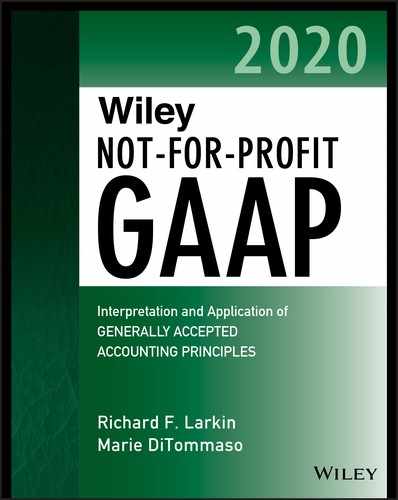PREFACE
Not-for-profit accounting is a specialized field of accounting that is receiving a growing level of attention. Over one million not-for-profit organizations currently operating in the United States have unique accounting and financial reporting issues that must be understood by a growing number of not-for-profit organization financial statement preparers and users.
The Financial Accounting Standards Board (FASB) has issued a series of statements and accounting standards updates that have significantly affected how not-for-profit organizations account for and report their activities and financial position. In 2016 the FASB issued an Accounting Standards Update that brought some important changes to certain aspects of the financial reporting model used by not-for-profit organizations. The FASB has also been active in many areas that affect a broad range of business and other organizations, including not-for-profit organizations. For example, financial instruments, intangible assets, pension obligations, fair value measurements, revenue recognition, and lease accounting have all been areas that have been impacted by recent FASB pronouncements. All of these topics are examined in detail in this book.
This book incorporates the codification of accounting standards into the FASB Accounting Standards Codification (the “Codification” or “FASB ASC”). The FASB essentially eliminated the statements on standards and other accounting literature and replaced them with the FASB ASC, which is updated by Accounting Standards Updates as the mechanism of promulgating changes in generally accepted accounting principles.
Despite the steady stream of accounting pronouncements that affect not-for-profit organizations, it's important to understand that accounting standards setting is influenced by a number of factors. For example, the Sarbanes-Oxley Act of 2002 created the Public Company Accounting Oversight Board (PCAOB), which has responsibility for setting auditing and other standards for public companies. Even with all of the new requirements and changes, the FASB continues to set generally accepted accounting principles for both public and nonpublic entities, including not-for-profit organizations. However, the FASB's agenda has focused more on issues affecting public companies, which has likely been influenced by the changes in the regulatory environment and issues highlighted by the numerous accounting shortcomings, and by the turmoil that was experienced in the financial markets. This changed a bit as the FASB established a Not-for-Profit Advisory Committee, which has reexamined the reporting model used by not-for-profit organizations and has made suggestions to the FASB to improve the financial reporting of these organizations. Some of these changes have been promulgated in an Accounting Standards Update issued in 2016. Additional changes may well result from future FASB deliberations. In addition, the American Institute of CPAs (AICPA), through technical practice aids, industry risk alerts, and accounting and auditing guides, continues to be an important contributor to the body of accounting principles used by not-for-profit organizations. It also significantly revised its accounting and audit guide for not-for-profit organizations in the recent past.
This book is designed as a complete and easy-to-use reference guide for financial statement preparers and users, as well as for auditors of not-for-profit organizations. It focuses on three key areas:
- Distinguishing characteristics of not-for-profit organizations and their financial accounting and reporting;
- Accounting areas that are unique to not-for-profit organizations;
- General areas of accounting that are applicable to the accounting and financial reporting of not-for-profit organizations.
This book would not have been possible without the hard work and efforts of many individuals. John DeRemigis and Pam Reh contributed greatly to the production efforts over many years. Sheck Cho has ably taken over those duties. The authors are greatly appreciative of their efforts as well as those of the current editorial and production teams.
Richard F. Larkin, CPA
Marie DiTommaso
March 2020
